Fresh and Frozen Packaged Food Products Policy
07/29/2025

This policy outlines the requirements sellers must meet to sell Fresh and Frozen Packaged Food Products on our platform.Key Points:
- Fresh and frozen packaged food products are restricted on TikTok Shop and are only permitted through an invite-only process. TikTok Shop will notify eligible sellers and provide them with entry requirements.
- Sellers are responsible for ensuring that temperature-sensitive products are properly packaged, handled, and stored to maintain safe temperatures throughout the supply chain, including maintaining a validated and verifiable cold chain when required.
Fresh and Frozen Packaged Food Products
Fresh and frozen packaged food products are commercially packaged, stored, and delivered at required temperatures to maintain freshness and product quality. This policy applies to the following types of fresh and frozen packaged food products:- Meat and seafood
- Milk and dairy
- Cheese
- Raw milk cheese made from unpasteurized milk must be aged for at least 60 days at a temperature no lower than 35°F (1.67°C)
- Baked goods and bread
- Prepared meals
- Beverages
- Raw juices must be treated through either pasteurization or a high-pressure process
- Pet food
Requirements to Sell Fresh and Frozen Packaged Food Products
Fresh and frozen packaged food products are restricted on TikTok Shop and are only permitted through an invite-only process. TikTok Shop will notify eligible sellers and provide them with entry requirements.Qualified sellers must use the Ship by Seller (3PL) shipping type when fulfilling fresh and frozen packaged food orders.
Sellers are also responsible for:
- Ensuring all fresh and frozen packaged food products, along with their packaging and labeling, comply with all applicable laws and regulations, including but not limited to, the Nutrition Labeling and Education Act, the Federal Food, Drug, and Cosmetic Act, and the Fair Packaging and Labeling Act.
- Providing complete, up-to-date, and accurate product information for all fresh and frozen packaged food listings.
- Complying with all applicable laws and regulations governing identity food products, including but not limited to organic, gluten-free, and kosher.
Documentation Requirements
Sellers must submit the following documentation, depending on the product category.More detailed descriptions of each document type and their requirements are provided in the sections below.
| Products | Required Documents for Manufacturers, Repackers, and Distributors |
| Bakery and BreadIce CreamPrepared MealsCakes and PiesSoups and StewsPet Foods |
|
| BeveragesCheesesMeat and SeafoodMilk and DairySandwiches and Wraps |
|
Proof of FDA Registration
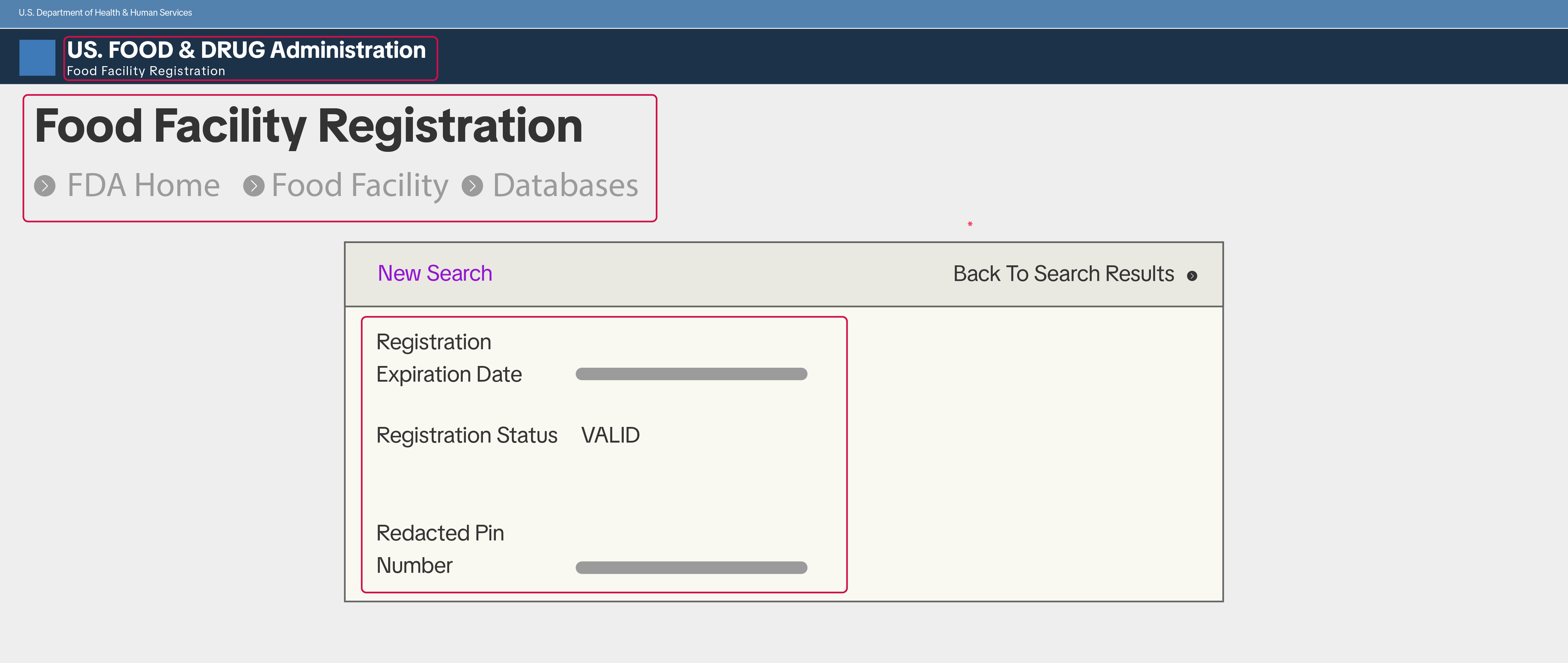 Submit a third-party issued FDA registration verification letter or a screenshot of the FDA registration portal, which are both acceptable as proof of FDA registration.
Submit a third-party issued FDA registration verification letter or a screenshot of the FDA registration portal, which are both acceptable as proof of FDA registration.The document provided must include the following information:
- Physical address of establishment
- Operation type of the registered establishment
- The FDA registration must be active at the time of submission
- If a screenshot of the FDA registration is submitted, the image must indicate the screenshot is from the FDA website
Food Packaging and Labeling
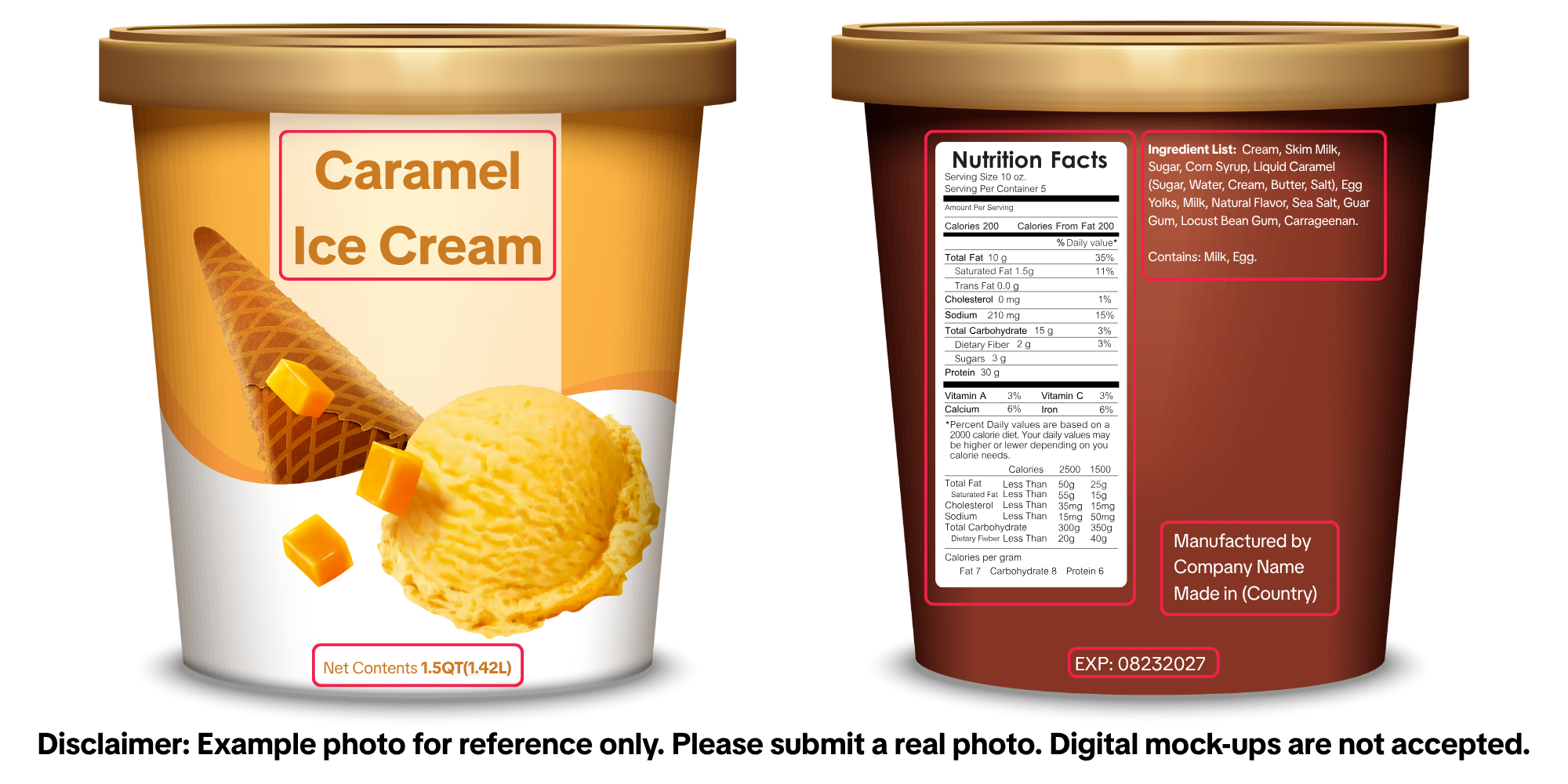 Submit a complete set of images of the product's packaging and labeling.
Submit a complete set of images of the product's packaging and labeling.- Pictures of the product's principal display panels and information panel must be provided.
- The following information must be shown:
- Product name
- Net weight
- Nutritional information/ facts
- List of ingredients
- Allergens declaration if applicable
- Manufacturer/ distributor's name and address
- Date labeling must follow an acceptable format, such as a best before or expiration date. The following are acceptable examples:
- Best if Used By MMMDDYYYY or Best if Used By Jan 12, 2026
Current Good Manufacturing Practices (cGMP) Certificate or Global Food Safety Initiative (GFSI) Recognized Scheme Certificate
Required for the following categories:- Deli and sandwiches
- Meat and seafood
- Milk and dairy
- Pasteurized or high-pressure processed juices
cGMP Certificate
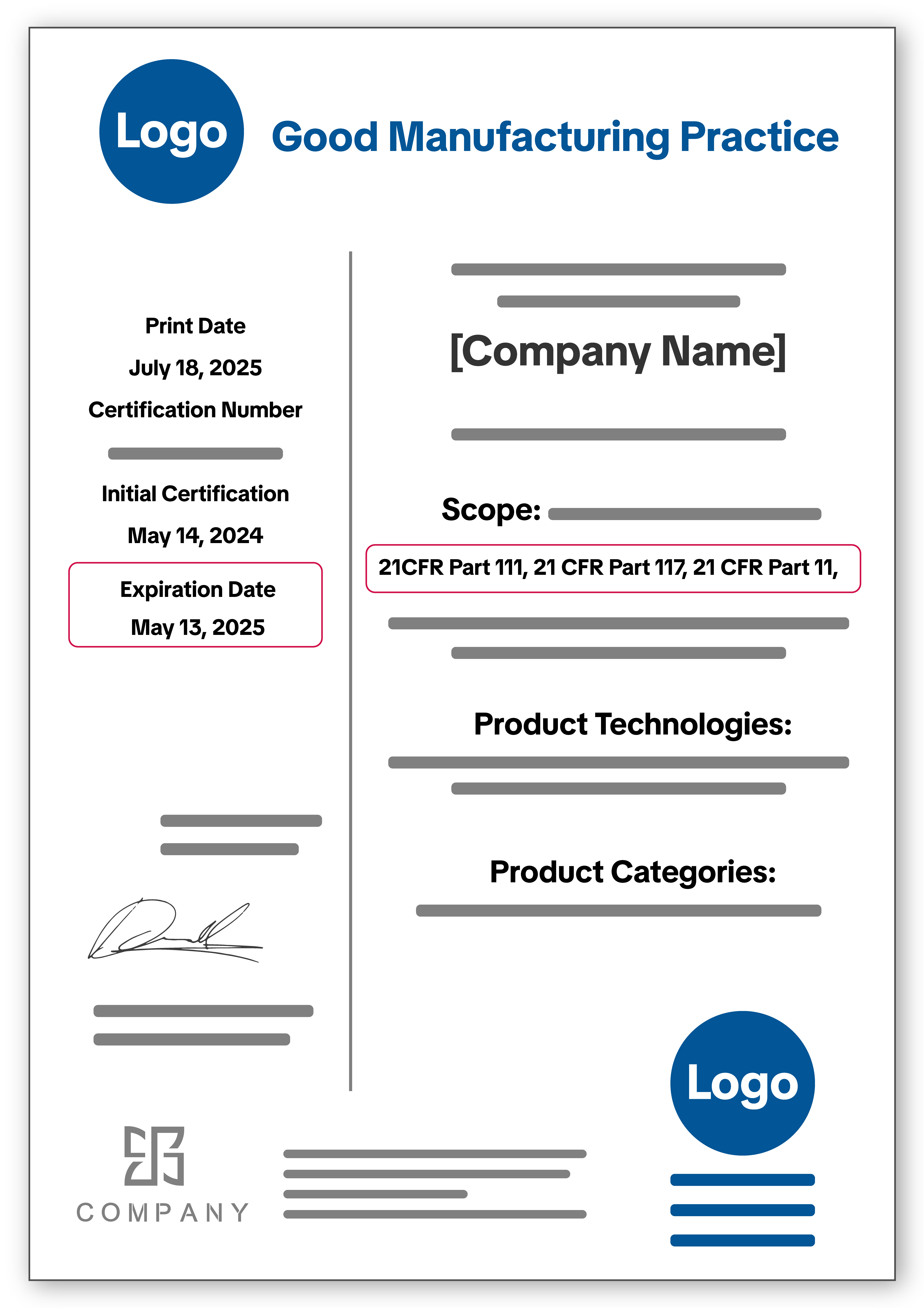 Issued under FDA-enforced cGMP (21 CFR Part 111), confirming the facility’s systems and controls meet FDA standards. Refer to FDA's cGMP Regulations article for more information.
Issued under FDA-enforced cGMP (21 CFR Part 111), confirming the facility’s systems and controls meet FDA standards. Refer to FDA's cGMP Regulations article for more information.Requirements:
- Certificate must be valid and not expired at the time of submission
- Must state that the facility complies with 21 CFR Part 111
GFSI-Recognized Scheme Certificate
Accepted certificates include SQF, BRCGS, FSSC 22000, and other internationally recognized food safety certifications.Requirements:
- Certificate must be valid and not expired at the time of submission
USDA Mark of Inspection (for meat, poultry, and egg products)
 Submit a legible image of the USDA mark of inspection, based on product type:
Submit a legible image of the USDA mark of inspection, based on product type:- Meat – The establishment number must begin with “EST.”
- Poultry – The establishment number must begin with “P-”
- Egg products – The establishment number may appear within the egg products shield or on the principal display panel, prefaced with “Plant” or “G.”
Temperature Requirements
Sellers are responsible for ensuring products are packaged and handled to maintain safe temperatures throughout the supply chain. Temperature deviations may result in listing restrictions or seller enforcement actions.- Frozen products must be kept below 10°F (-12°C) at all times.
- Ice cream must be kept below 0°F (-18°C).
- Refrigerated products must be maintained between 32°F and 41°F (0°C to 5°C) at all times.
- When using dry ice as a refrigerant:
- The package must display appropriate hazard labels (see example below).
- Shipments must comply with federal regulations for dangerous goods and hazardous materials.
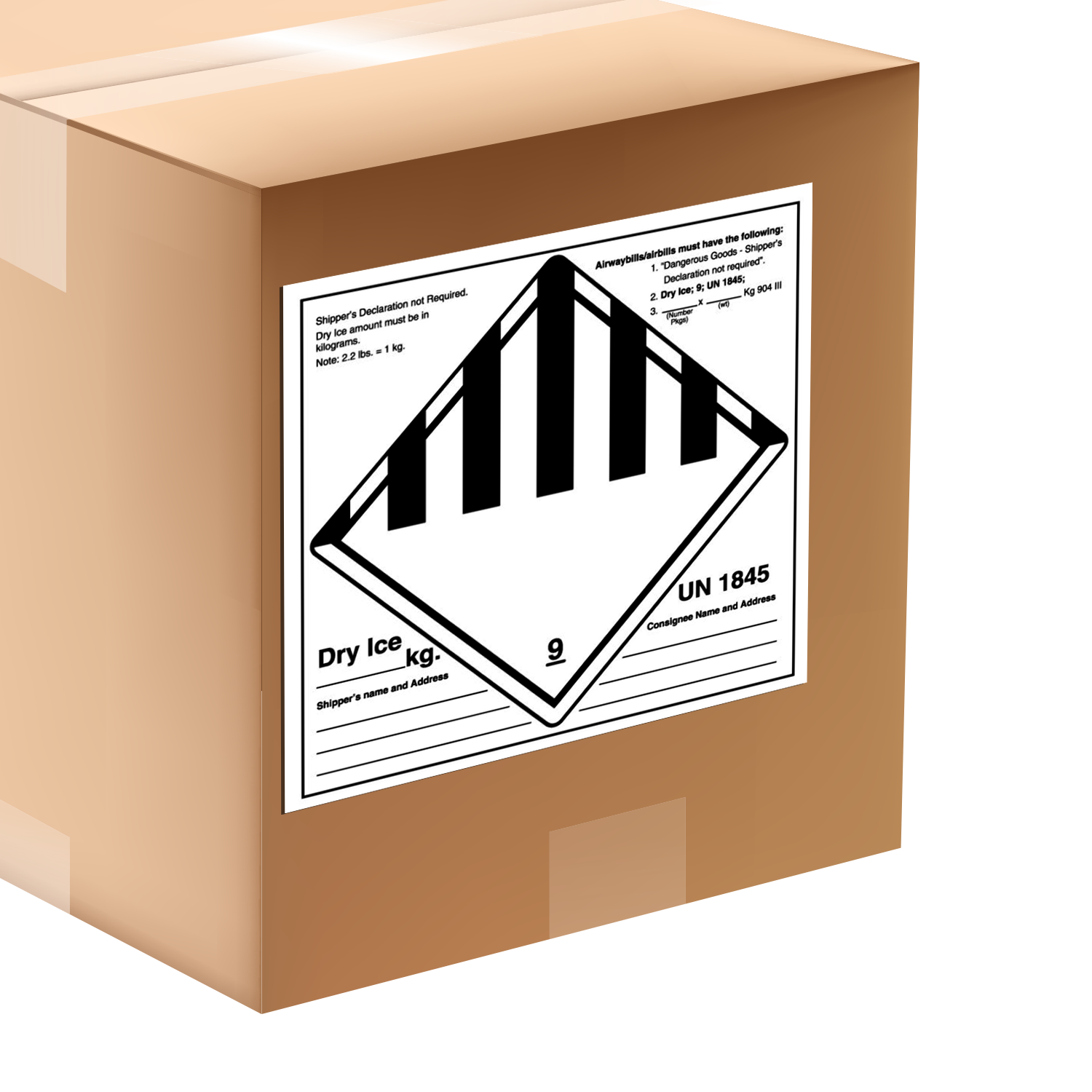
Cold Chain Validation and Verification
TikTok Shop requires sellers to maintain a cold chain validation and verification program to ensure temperature-controlled storage keeps fresh and frozen packaged food products safe and consumable. Validation involves demonstrating how product temperatures are maintained even under worst-case conditions, like extreme temperatures or maximum delivery times. Verification is used to confirm products arrive at the correct temperature. If issues arise, sellers must implement corrective actions.TikTok Shop reserves the right to request certification of cold chain compliance at any time, and sellers must provide proof of validation and verification within the specified timeframe upon request.
Enforcement Actions and Appeals
We regularly review your shop’s compliance with this policy and may take enforcement action if any violations are identified. This may include removing your ability to sell these products, assigning violation points, or removing product listings. For more information on enforcement actions, refer to our Seller Enforcement Policy.If you'd like to appeal an enforcement action, visit the Appeals section of our Seller Enforcement Policy for guidance on how to proceed.
Best Shipping Practices
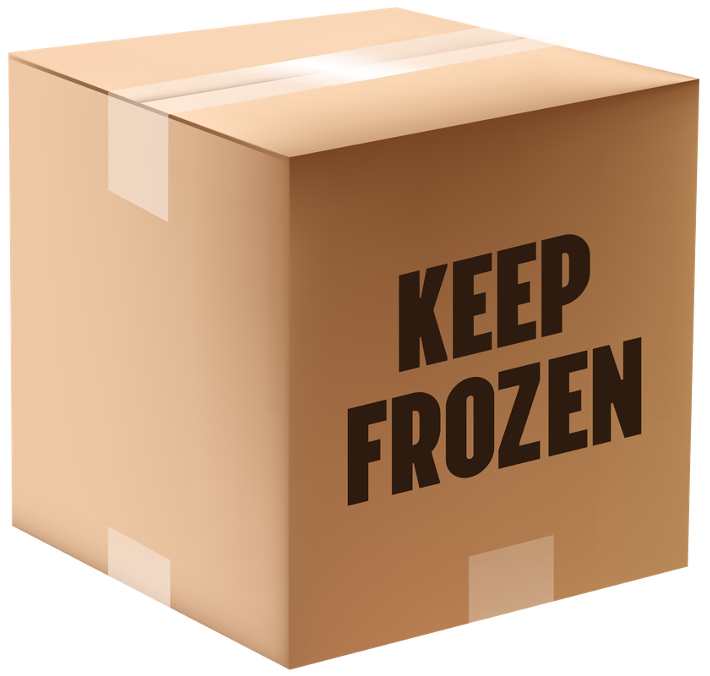 TikTok Shop recommends maintaining a transit time of under 72 hours once the order leaves the cold-chain facility to help preserve product quality and safety.
TikTok Shop recommends maintaining a transit time of under 72 hours once the order leaves the cold-chain facility to help preserve product quality and safety.Labeling and Packaging
- Packaging should clearly display “Keep Frozen” or “Keep Refrigerated” on the outside. This not only helps customers but also alerts shipping partners to handle the package appropriately.
- Major carriers such as UPS, USPS, and FedEx offer specific label recommendations for perishable goods.
- Avoid slow speeds or delays, as these can compromise product quality.
- Schedule shipments early in the week to reduce the risk of packages sitting in transit over the weekend.
- Plan ahead for holiday-related delays that may impact transit times.
- Carriers provide guidance on the appropriate amount of dry ice based on transit duration.
- Expect 5 to 10 pounds of dry ice to sublimate every 24 hours, depending on the density of the expanded polystyrene (EPS) insulating foam container.
- It’s recommended to include enough dry ice to last at least 24 extra hours in case of unexpected transit delays.